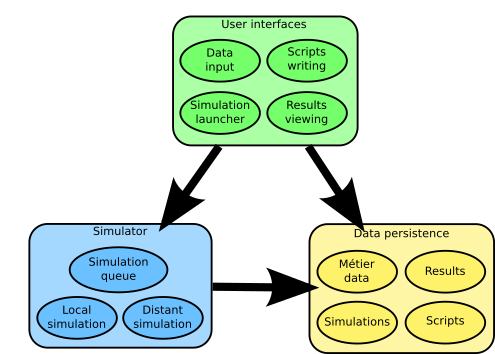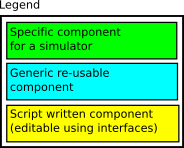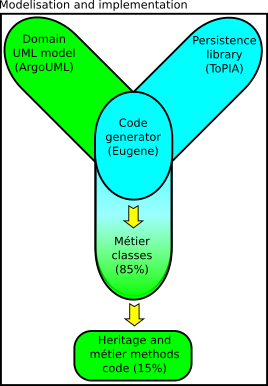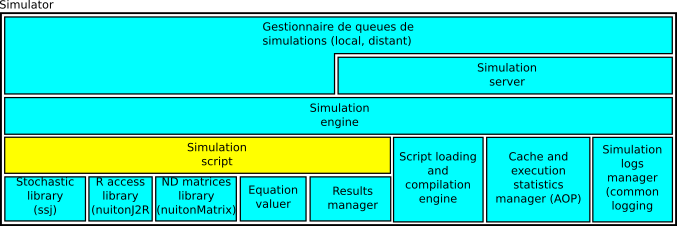
ISIS-Fish comprises three modules

The application is first described formally using UML (Unified Modeling Language). A code generator is then used to create all the classes representing the application. The application methods themselves are not generated but written by inheritance from the generated classes. The application methods in ISIS-Fish account for about 15% of the code of the application classes and persistence classes.


Persistence is implemented using ToPIA (Tools for Portable and Independent Architecture) which provides an abstraction of the persistence library. Currently we use Hibernate for the ORM (Object to Relational Mapping) and the H2 database engine.
Libraries have been written for managing text files such as the scripts. All data (Region, Simulation, Script) can be synchronized with a server using the Java SVN (subversion) library (svnkit).

The user interfaces use the Java Swing library. To simplify creating and maintaining the interfaces and to create a clean division between the interface code and the application code the Jaxx library is used with interfaces defined in XML. This has the advantage that CSS can be used to define the appearance of the interface. Previously, we used SwiXAT, but Jaxx is compiled into Java files which can be reused in conventional systems.
The interfaces use a number of graphic components.
Most of the interfaces are not specific to ISIS-Fish and may be easily reused in other simulation projects. Only the data entry for the fleet model and a small number of tabs in the simulation control window are specific to ISIS-Fish.

The simulation engine is not specific to ISIS-Fish. All the code specific to ISIS-FISH is written in Java and can be modified using the script editors in the user interface.
All other components are directly reusable.

